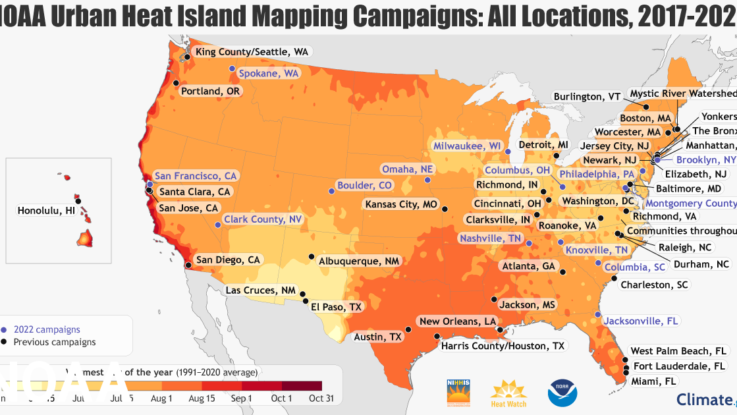
The National Oceanic and Atmospheric Administration (NOAA) is partnering with the interagency National Integrated Heat Health Information System (NIHHIS), data analytics specialist Capa Strategies, and community groups to map the hottest parts of 14 US cities and counties and two international cities.
“Our nation faces a climate crisis that has exacerbated inequities for low-income communities and communities of color,” said NOAA administrator Rick Spinrad. “NOAA is helping communities measure their hottest places so that they can use this information to inform strategies to reduce the unhealthy and deadly effects of extreme heat and help us build a climate-ready nation.”
Capa Strategies’s end-to-end program includes sensor technology, analysis and modeling, along with community engagement to allow communities to develop hyperlocal descriptions of heat and develop mitigation options specific to their region. Volunteer citizen scientists will be led by teams of local partners in each city, where they will use heat sensors mounted on cars or bikes to record temperature, humidity, time, location every second as they travel around their neighborhoods.
The US communities include Boulder, CO; Clark County (which includes Las Vegas), NV; Columbia, SC; Columbus, OH; Jacksonville, FL; Knoxville and Nashville, TN; Milwaukee, WI; Montgomery County, MD; Omaha, NE; Spokane, WA; Philadelphia, PA; Brooklyn, NY; and San Francisco,CA. International cities include Freetown, Sierra Leone and Rio de Janeiro, Brazil.
This years’ heat mapping campaign will also feature new, NOAA-funded instruments to better characterize urban climate and health hazards. Columbus and Philadelphia will use mobile air quality monitors to develop an understanding of the related impacts of heat and air quality. Clark County and Columbia will also install stationary temperature and humidity sensors to provide additional monitoring of the urban heat island effect over the length of the summer.
“Extreme heat kills more Americans than any other weather event and has the greatest impact on our nation’s most vulnerable communities,” said Deputy Secretary of Commerce Don Graves. “Fortunately, our talented and dedicated researchers and scientists at NOAA are working directly with communities across the country to help them take action to manage extreme heat. As climate change worsens heat waves, this critical information will help bring local and equitable solutions for those facing the greatest threats.”